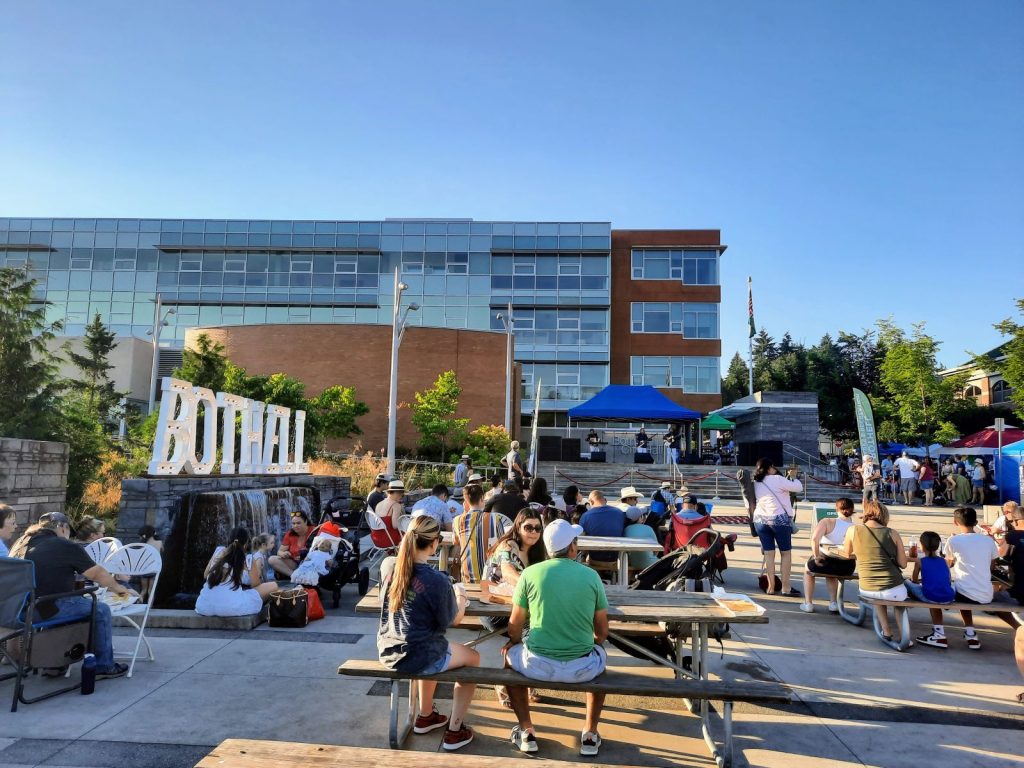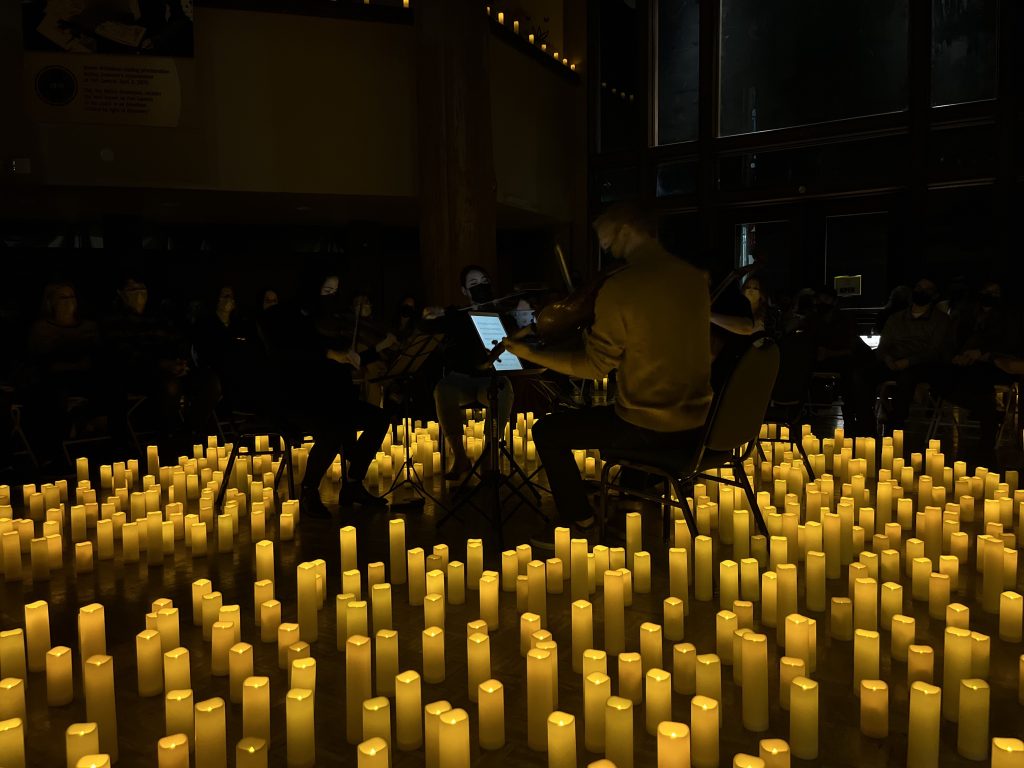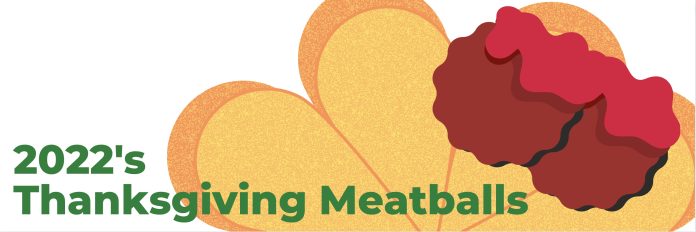Just like in every household during the holidays, there are many Big Media indulgences as we trash one calendar and hang a new one. The Urbanist is no different, and we will be hosting a few year enders and looks forward over the next few weeks.
Few media traditions, however, tend to be as saccharine as those with Thanksgiving. Are we going to go with the things we’re thankful about and try to squeeze some tears out of the Reddit-addled and hot-take bleary readership? Or will we put all journalistic integrity on the line and tee up a handful of turkeys for the year, mocking foibles and kicking someone when they’re deservedly down?
Of course, The Urbanist can’t do anything normal. So we’re going to talk Thanksgiving Meatballs. Just like the hot plate of tomato sauced, softball-sized, pork and veal monsters that show up on the holiday buffet, these morsels stand out because how poorly they fit into the overall ambiance of the day. We’re not even sure who Aunt Marseille is, why she insists on making these things, or how she fits into the family.
But damn, after trying one, we’re happy they’re here. Cutting through all the heavy cream and cloying pies, we realize they are great in and of themselves and also something necessary. They’re a reminder that traditions start somewhere. Why not here, today.
Bonus, a glass of sherry in, Aunt Marseille is going into the story about your grandparents, a trip to the Dells, and a shaved schnauzer named Perkins.
Bothell
Tucked at the north end of Lake Washington and overshadowed by neighboring powerhouses like Seattle, Bellevue, and Redmond, it’s easy to forget Bothell. As one rounds the cluster of shops and apartments on SR 522 or the tangled intersections off I-405, this town of 48,000 slips by. Though it has a UW campus and a McMenamins, it flies mostly under the radar.

No matter how sleepy they appear, Bothell is tearing up the script on progressive urbanism these days. The speculatively developed city hall has anchored some impressive apartment and street front development complimenting the cozy town center. The city council has extended the downtown open street program, allowing the Main Street bars and restaurants to make an absolutely pleasant urban plaza. And Urbanist favorite Davina Duerr fought the good fight in the legislature on HB1099 to consider climate change in comprehensive plans. Though it didn’t pass, she returned to her Bothell city council position and convinced the city to stick to it anyway.
It’s easy to dismiss these as blips in a fairly sprawling exurb. But that takes away from the effort it takes to turn any ship, much less one that large.
KIRO7’s Crystal Fincher-led election night coverage
November 8th was not supposed to be a good night. The Red Wave was poised to wash the last whispers of representative democracy off the map, scouring away the minimal progressive gains made over the last two years. So tuning into broadcast television coverage was a fool’s errand for anyone hoping to enjoy breathable air or human rights. At least KIRO7’s broadcast featured Crystal Fincher to comfort us at the precipice.
We first got to know Crystal Fincher’s interviewing and reporting skills from her Hacks and Wonks podcast. Casually amazing with questions and topics, the podcast is the second most important local thing we subscribe to. (Her coverage was so good we invited her onto The Urbanist’s board.) Election night just reinforced Fincher as the best informed correspondent covering Seattle news. Easily tying the actual events of the day to an extensive base understanding, she was as outstanding a representative of “the left” that both-sides-ist television coverage can ask for.
The Election Night reality turned out differently. We’re not quite ready to say democracy was saved or even gently improved by the midterms, but the nation seems to have skirted the hellish proto-fascist MAGA event horizon for now.
Which makes us appreciate Fincher’s professionalism even more. She totally avoided the cackling and pointing that we would have done in the same situation. Watching the grifters, oligarchs, and predators weasel their explanations of Republican failure could have been insufferable. But Fincher’s handling of their self-serving lies with her general good nature was deft, and became increasingly calm as the evening went on. A reminder that we just might be all right.
Ranked choice voting
Seattle voters got a late menu substitution that turned out to be delightful. Instead of unpalatable approval voting cooked up at a center-right think tank, Seattle voters got to sink their teeth into ranked choice voting — a battle-tested recipe to reform elections to be more representative of the will of the people with the full flavor of grassroots support. Both editorial boards at The Seattle Times and The Stranger poo poo’d ranked choice voting for varying reasons, but the voters greenlit it nonetheless, showing that some measures are too popular to be blocked by those two powerful endorsing bodies. (The Urbanist Elections Committee got it right, by the way.)
Credit for adding ranked choice voting to the menu belongs to Councilmember Andrew Lewis, who sponsored the amendment adding it to the ballot alongside approval voting, which bought its way onto the ballot with paid signature gatherers funded in large part by a crypto billionaire. The result is that by no later than 2027 — and potentially in 2025 in time for the mayoral election — Seattle voters will get to rank their candidates and follow their heart’s content instead of feel roped into strategic voting for only candidates deemed highly viable.
This allows better hope for candidates without the blessings of the traditional king- and queenmakers. Incidentally, that could be why The Seattle Times and The Stranger had so many very serious concerns. Like an unexpected Thanksgiving meatball, ranked choice voting has arrived and it might just be one of our favorite November treats.
Candlelight concerts
Whatever phase of pandemic we’re now surviving, at least there is the return of live music. It was a difficult two years for venues and artists, as well as the fans who want to appreciate art with other people. And nothing has been more welcome than the moving, intimate candlelight concerts.

Held at various, surprisingly modest locations throughout the city, the shows put a local act on the stage with a monster number of candles. Then the lights go down and the music begins. It’s illuminating in all the right ways. Often in the round, the audience gets a completely encompassing feeling of the sound, played over the natural draw of flame and flicker. A surprisingly immersive experience.
For a musical city like Seattle, being away from live art is a physically painful experience. But not everyone is ready to jump right back into stadium shows with thousands of fans and monopolistic gatekeepers. The candlelight concerts have been a beautiful and comforting return.
The demise of bullshit food trends
Cronuts and gourmet cupcakes and gold leaf everything. None of these actually lived up to the billing for gastronomic pleasure. Sure, layers of buttery goodness crusted with sugar is amazing, but it’s always been amazing and didn’t need a portmanteau name to brand it. Good riddance to the lines to get one, too.
Of course, they’re not totally gone. There are still devoted cupcake shops around town, but they’re noticeably expanding to ice cream, coffee, and other treats. There more videos of people laughing at gold leaf steaks (and their stupid bills) as there are people eating them. Really, that’s as ratioed as real life can get.
Perhaps what has changed is the seriousness with which we take the latest food trend. We have become self-aware enough to recognize the trend is just that: fleeting popularity. We seem to have moved from the food itself as the Next Thing. Rather than gush about the joi-de-viddles, we’re happy to be out with other people. We’re enjoying the food just fine, but appreciating the entertainment of the experience more.
Reopened West Seattle Bridge
Many urbanists thought the West Seattle Bridge emergency closure could be an opportunity to prioritize transit and deprioritize single occupant vehicles. Whether it was a full rebuild, a demolition and reliance on lower bridges, or an acceleration of light rail, we would have preferred pretty much anything to improve upon the status quo of an eight-lane, polluting asphalt pipeline dumping climate arson across the Duwamish. Nonetheless, the carbon-fiber-wrapped status quo is what we got.
But we also like West Seattle, our friends who live there, and honestly don’t want an entire quadrant of the city to be marooned. The closure sucked, and we are genuinely happy it’s over. Motorists are seeing the biggest gains, but transit riders are also reporting swifter trips. The discussion can now turn to real improvements in traffic and infrastructure without the pressure of a cartoonish countdown clock looming over the proceedings.
Reopening also cuts off the nonsense about a gondola. So well done, bridge. Well done.
Ray Dubicki is a stay-at-home dad and parent-on-call for taking care of general school and neighborhood tasks around Ballard. This lets him see how urbanism works (or doesn’t) during the hours most people are locked in their office. He is an attorney and urbanist by training, with soup-to-nuts planning experience from code enforcement to university development to writing zoning ordinances. He enjoys using PowerPoint, but only because it’s no longer a weekly obligation.



